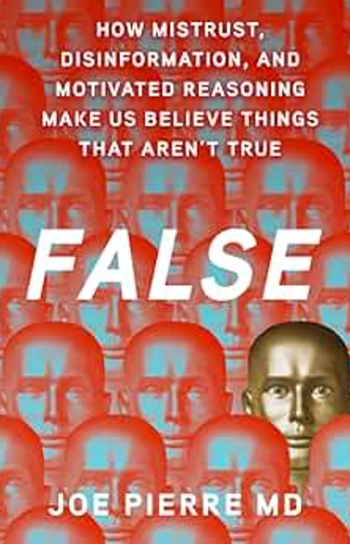
- Psychiatric Times Vol 28 No 2
- Volume 28
- Issue 2
The Naked Lady Who Stood on Her Head: A Psychiatrist’s Stories of His Most Bizarre Cases
The Naked Lady Who Stood on Her Head will appeal to lay readers who like to solve puzzles, as well as to seasoned clinicians who will be challenged by its wide array of intricate cases.
Psychiatrist Gary Small and his screenwriter spouse Gigi Vorgan have done it again. After coauthoring the breezy and educational iBrain, The Memory Bible, The Memory Prescription, and The Longevity Bible, they have produced another accessible book, provocatively titled
This is a book of clinical “fascinomas”-the term physicians use to describe particularly unusual, interesting, or challenging patient cases. Small and Vorgan frame their tales in a memoir of their personal lives and of Small’s career as a psychiatrist. The authors portray themselves as down-to-earth people who, like everyone else, must cope with the vicissitudes of life. While Vorgan is not medically trained, she comes across as a sharp and witty writer with whom Small can recount his cases, all the while carefully preserving patient privacy.
The authors describe case studies in sufficient clinical detail to satisfy the medical practitioner, yet not so much as to overwhelm the lay reader. I found myself puzzling over these clinical dilemmas and thinking through each case from presentation to diagnosis to intervention. Early in the book, Small describes the “naked lady,” who challenged him while he was a psychiatry resident in training. He offers her a glass of juice as an act of human kindness. It is a surprise when this gesture results in a resolution of her symptoms and a diagnosis.
In this and other vignettes, Small discusses cognitive, behavioral, and emotional manifestations of diabetes, Alzheimer disease, polydipsia with hyponatremia, and other medically driven illnesses. He also relates his work with patients who have psychiatric disorders without any confounding medical issues, such as a couple burdened by sociopathy, a wealthy agorophobic, and a woman with emotional longings as a result of early parental loss.
Small conveys a comfortable, easygoing interview style with patients. In describing his clinical thought processes, he reveals himself to be a meticulous thinker of the best sort: all ideas are there to be challenged, tested and, if necessary, discarded. He tackles ethical issues that confront the psychiatrist, including home visits and clinical treatment of friends and colleagues.
One cannot help but compare this book with the works of another engaging writer and skilled clinician, neurologist Oliver Sacks. I find Small and Vorgan’s style warmly inviting. I’m on scene with them as Small interacts with his patients and while both of them grapple with daily life struggles. On the other hand, when I read the works of Oliver Sacks, I feel as if I am observing an extraordinary diagnostician from a distance. Sacks has a tendency to romanticize even the most devastating neurological conditions, whereas Small gives equal due to the heartache and tragedy of psychiatric illness. With this book, Gary Small joins Oliver Sacks in the company of medical mystery writers that includes Berton Rouche and Lisa Sanders.
The Naked Lady Who Stood on Her Head will appeal to lay readers who like to solve puzzles, as well as to seasoned clinicians who will be challenged by its wide array of intricate cases. Medical students will find a guide on how better to elicit and to integrate information from patients-all the while keeping in mind their humanity. Psychiatry residents will find this a highly palatable “textbook” on psychiatric illness and diagnosis. In short, The Naked Lady Who Stood on Her Head should stand on everyone’s bookshelf.
Articles in this issue
over 14 years ago
Clinical Manual of Couples and Family Therapyover 14 years ago
Manual of Inpatient Psychiatryover 14 years ago
That’s Not My Child: A Case of Capgras Syndromeover 14 years ago
Treating Self-Harm in Children and Adolescentsalmost 15 years ago
Psychotherapy is Alive and Talking in Psychiatryalmost 15 years ago
Clinical Manual of Couples and Family Therapyalmost 15 years ago
Patient Violence Against Health Care Professionalsalmost 15 years ago
A “Pocket Guide” to Avoiding the Most Common Boundary PitfallsNewsletter
Receive trusted psychiatric news, expert analysis, and clinical insights — subscribe today to support your practice and your patients.

















